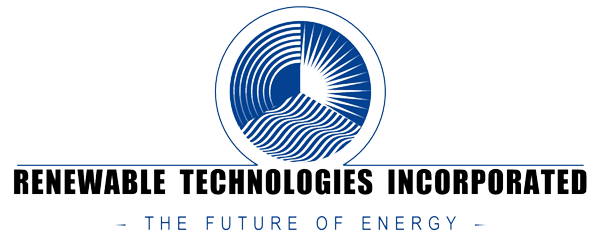If you’re like most business owners, you probably don’t give much thought to your power supply until there’s a problem. A sudden power outage can bring your business to a standstill, costing you time, money, and can even pose hazards to the wellbeing of those within your building. That’s where an Uninterruptable Power Supply (UPS) system comes in. In this article, we will explain what a UPS is and how it works. We’ll also discuss the benefits of using a UPS with solar power, the difference between AC and DC power, and more.
What Is an Uninterruptable Power Supply (UPS) System?
A truly Uninterruptable Power Supply system will be composed of an inverter, a battery, and a rectifier circuit. While the AC power coming from the operational grid comes through the rectifier circuit, it is transformed into DC power, which then charges the battery and creates a bank of reserved power.
The purpose of a UPS system is to create a seamless supply of power to buildings that rely on constant electricity in order to function, such as hospitals, scientific labs, or high security facilities. That way, in the event of a power outage, they have a battery backup that will kick in just a few microseconds after the loss of power from the grid.
What’s the Difference Between AC and DC Power?
There are two different kinds of electrical currents: Alternating Current (AC) and Direct Current (DC). So, what are the different applications of AC and DC power, and how does that apply to a UPS system?
To answer this question, we must first look at the benefits of both kinds of electrical currents. AC power is the name for a type of current that changes (or alternates) in direction due to the electrical currents from electrons moving in positive or negative directions. This is known as a sinusoidal AC wave, which is a natural biproduct of the alternators used by power plants to generate electricity. Because AC power alternates direction in waves of current, it can span greater distances than DC currents and therefore be distributed with a wider reach, which is why it is the type of current most frequently produced by power companies.
Alternatively, DC power moves from its source to its target in a linear fashion—and as we’ve just learned, this source is rarely a power plant. In fact, most DC power comes from solar cells, batteries, or even modified alternators. What’s more, AC power can be converted to DC power using a rectifier circuit, as with a UPS system. DC power is known for delivering a more consistent voltage than AC power, which is one of its primary benefits aside from its ability to be stored—however, there are some household appliances that require AC power in order to function, such as refrigerators and washing machines.
Because both types of currents have their benefits and their drawbacks, the way most power companies supply their clients with electricity is by sending Alternating Currents over long distances to a home or business where the current is then converted to Direct Current in order to provide the building with consistent voltage. Both currents have their part to play in illuminating, warming, and tending to your space, which is why a UPS system includes both a rectifier and an inverter.
What Is an Inverter?
You’ve now learned the purpose of the battery and the rectifier circuit within the UPS system—but what does the inverter do? An inverter works by transforming DC power to AC power; basically, it does the opposite of what the rectifier does. This enables the DC power within the battery reserve to power your household appliances by converting to Alternating Current electricity. An inverter will sense when the regular supply of AC power from the grid is interrupted, dip into the battery for DC power, and convert it to AC for use.
What Is the Difference Between an Online and Offline UPS?
There are two different kinds of Uninterruptable Power Supply systems: online UPS systems and offline UPS systems. An online UPS system is known for having absolutely no delay—not even a nanosecond—when regular AC grid power gets interrupted before it begins to take charge of powering your building. This is due to its combination of rectifier, inverter, and a charge controller which always directs AC input through the battery before sending it to its “final destination.” This means that there is absolutely no interruption between AC input and AC output, as the battery is a part of the original process to begin with. This means there is no need to switch between normal operating systems and a backup plan in the event of a power failure—as an online UPS system is just that: always on.
The downside of a UPS system is that the battery is in constant use, and thus has a reduced lifespan; and it also operates at a relatively high temperature, which requires costly specialized equipment. However, for facilities like hospitals with patients who rely on uninterrupted power to survive, an online UPS system is the way to go.
On the other hand, we have our offline UPS systems, which splits the main AC input from the power grid when it receives it, sending some power to the battery reserve after rectifying it to DC and sending the rest of the unrectified AC current to its destination, bypassing the charge controller. Because there are two separate power lines, offline UPS systems are associated with a slight delay of around 5 milliseconds, as they have to make a switch from normal operating procedure to pulling energy straight from their battery reserve. As such, this type of power is typically reserved for buildings where a 5 millisecond delay will not cause a safety hazard.
It is called “offline” because the battery remains off during normal operation, and only kicks on when the power grid AC electricity is interrupted. This has the benefit of increasing the system efficiency—but does not have the advantage of tempering the AC current between the load and the source for any fluctuations in AC mains, unlike online UPS systems.
How to Choose Between Online and Offline UPS Systems
Online UPS systems are a reliable way to keep constant electricity flowing to sensitive equipment without interruption. However, with this crucial advantage comes a higher cost in installation, operation, and maintenance, which must be factored into the total cost. Other advantages of choosing online UPS systems include the fact that they offer longer simultaneous operation of electrical devices and they can help regulate main power supply fluctuations.
Alternatively, offline UPS systems have the benefit of being significantly more affordable than online UPS systems, which is why many businesses opt for this type of Uninterruptable Power Supply if they don’t have to worry about the wellbeing of the folks within their facility. Any time you might have the leisure of turning on an emergency generator, you are likely to be able to get away with an offline UPS system—which has the benefit of being able to connect to your solar panels.
When to Add Solar to Your UPS System
Of course, you don’t always have to rely on the main power grid to supply your UPS system—whether online or offline—with AC current. One way to increase your backup supply of DC power reserved in a battery system is to add an off-grid renewable energy to the mix, like solar.
Most solar panels produce DC currents which can immediately be stored in a battery or system of batteries, adding to your resources in the event of a power outage. If you’re looking for AC current for those larger household appliances, you can luckily rely on your inverter to transform the DC to AC power.
However, the technology and efficiency of solar power technology is continuing to push forward. In fact, some solar panels produce AC power through the use of integrated microinverters; but these are not as efficient as regular DC solar panels. However, DC coupled panels may pose a higher upfront cost than their less-efficient AC counterparts—though the Return On Investment (ROI) of the DC panels over time allows them to gradually pay for themselves.
UPS Systems Installed By California’s Top Solar Experts
If you live in an area that is blessed with an abundance of the renewable free resource of the sun, you may want to think about incorporating solar panels into your Uninterruptible Power Supply system for even more reserved energy. Whether your needs are for offline or online UPS systems, solar can help you generate even more stowable DC electricity for a backup battery system that can power everything from a residential setting to an industrial one. If you rely on electricity in any way for your livelihood, you may consider investing in a UPS system—and adding solar to the mix only guarantees that the system will pay for itself in a number of years.
Are you looking for solar UPS systems installed by the top solar experts in California? Contact Renewable Technologies today for a quote!

